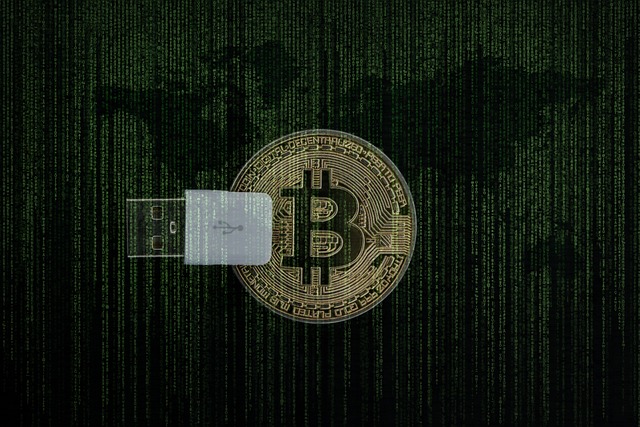Setting up a secure crypto wallet is vital for protecting digital assets, preventing unauthorized access, hacking, and human error. Choose between software, hardware, or paper wallets based on needs, research reputable providers like MetaMask or Ledger known for robust security. Implement essential measures: enable two-factor authentication (2FA), use strong unique passwords, regularly back up your wallet with secure seed phrases, and keep software updated. Avoid common pitfalls like neglecting 2FA, weak passwords, incorrect key usage, and predictable address names to fortify your crypto wallet's security.
- Understanding Cryptocurrency Wallets: The Digital Safes of Your Assets
- Why Security is Paramount When Setting Up a Crypto Wallet
- Key Components of a Secure Wallet Setup
- Step-by-Step Guide to Creating a Safe and Reliable Crypto Wallet
- Common Pitfalls to Avoid During the Default Wallet Setup Process
- Best Practices for Maintaining a High Level of Security After Initial Setup
Understanding Cryptocurrency Wallets: The Digital Safes of Your Assets

Cryptocurrency wallets are digital safes that store your cryptocurrency assets, acting as a bridge between you and the blockchain network. They facilitate secure transactions and manage your private keys, which are essential for accessing and controlling your funds. There are various types of crypto wallets, each with unique features, security levels, and purposes. Choosing the right one is crucial for setting up a secure crypto wallet.
A secure crypto wallet ensures that your assets remain protected from unauthorized access. It uses cryptographic techniques to safeguard your private keys and transactions. Some wallets offer advanced security measures like hardware wallets, which store keys offline, providing an extra layer of protection against cyber threats. Others incorporate biometric authentication or multi-signature features for enhanced security. Setting up a secure crypto wallet involves creating a strong password, enabling two-factor authentication, and often backing up your wallet to ensure that you can always access your funds if your device is lost or stolen.
Why Security is Paramount When Setting Up a Crypto Wallet

When setting up a crypto wallet, security should be your top priority. Digital wallets store sensitive information, including private keys that grant access to your cryptocurrency assets. A secure crypto wallet not only safeguards your funds from unauthorized access but also protects against potential loss due to hacking, malware, or even human error.
Implementing robust security measures, such as enabling two-factor authentication (2FA), using strong and unique passwords, and keeping your software up to date, is essential. Additionally, choosing a reputable wallet provider that employs advanced encryption technologies ensures an extra layer of protection. Prioritizing security during setup guarantees the longevity and peace of mind associated with your crypto assets.
Key Components of a Secure Wallet Setup

Step-by-Step Guide to Creating a Safe and Reliable Crypto Wallet

Creating a safe and reliable crypto wallet is an essential step for anyone looking to secure their digital assets. Here’s a step-by-step guide to help you navigate this process:
1. Choose a Wallet Type: The first step involves selecting the type of wallet that best suits your needs. Options include software wallets, hardware wallets, and paper wallets. Software wallets are accessible via mobile or desktop apps, offering convenience but potentially lower security. Hardware wallets, like Ledger or Trezor, provide robust protection through physical devices. Paper wallets involve writing down private keys, providing an offline backup solution.
2. Research and Select a Reputable Provider: With numerous wallet options available, it’s crucial to choose a reputable provider known for its security measures. Check their reviews, understand the level of encryption they offer, and ensure they have a proven track record of protecting user funds. Popular choices include well-established platforms like MetaMask (for software wallets) or Ledger (for hardware solutions).
3. Set Up Two-Factor Authentication (2FA): To fortify security, enable 2FA during setup. This adds an extra layer of protection by requiring a second form of verification, usually through SMS, email, or authenticator apps.
4. Backup Your Wallet: Regularly backing up your wallet is vital to ensure data recovery in case of device loss or failure. Most wallets offer backup options where you can store your seed phrase (a unique set of words that allows access to your wallet) securely off-line. Keep these phrases secret and safe, as losing them means losing access to your funds.
5. Monitor and Update Regularly: Stay informed about security updates from your wallet provider and keep your software up to date. Regular monitoring helps protect against emerging threats and vulnerabilities.
Common Pitfalls to Avoid During the Default Wallet Setup Process

When setting up a default crypto wallet, users often fall into several common pitfalls that can compromise their funds’ security. One of the primary errors is neglecting to enable two-factor authentication (2FA). While it adds an extra step during login, 2FA significantly enhances the wallet’s security by requiring not just a password but also a unique code sent to your device. Additionally, many users mistakenly choose weak passwords or reuse credentials from other services, making their wallets vulnerable to brute-force attacks.
Another trap is using public keys for private purposes. Public keys are publicly accessible and should only be shared when receiving crypto assets. Keeping them private ensures that only the intended recipient can access the funds. Furthermore, users should avoid defaulting to easily predictable names or labels for their wallet addresses, as this could make them more susceptible to phishing attempts. Instead, using unique and memorable passwords for each wallet enhances overall security during the set-up process.
Best Practices for Maintaining a High Level of Security After Initial Setup

After initial setup, maintaining a high level of security is paramount for your digital assets. One of the best practices is to set up a secure crypto wallet. This should be treated as a safeguard for your funds, similar to a physical safe. Use strong passwords and enable two-factor authentication (2FA) for an extra layer of protection. It’s also crucial to keep your software updated to patch any known vulnerabilities.
Regularly reviewing and updating your security protocols is essential. This includes keeping track of new threats and best practices in the crypto space. Backup your wallet securely, preferably offline, to ensure you can access your funds even if your primary device is compromised. Remember, a secure wallet is just one part of a comprehensive security strategy – stay informed and adapt as needed for optimal protection.
